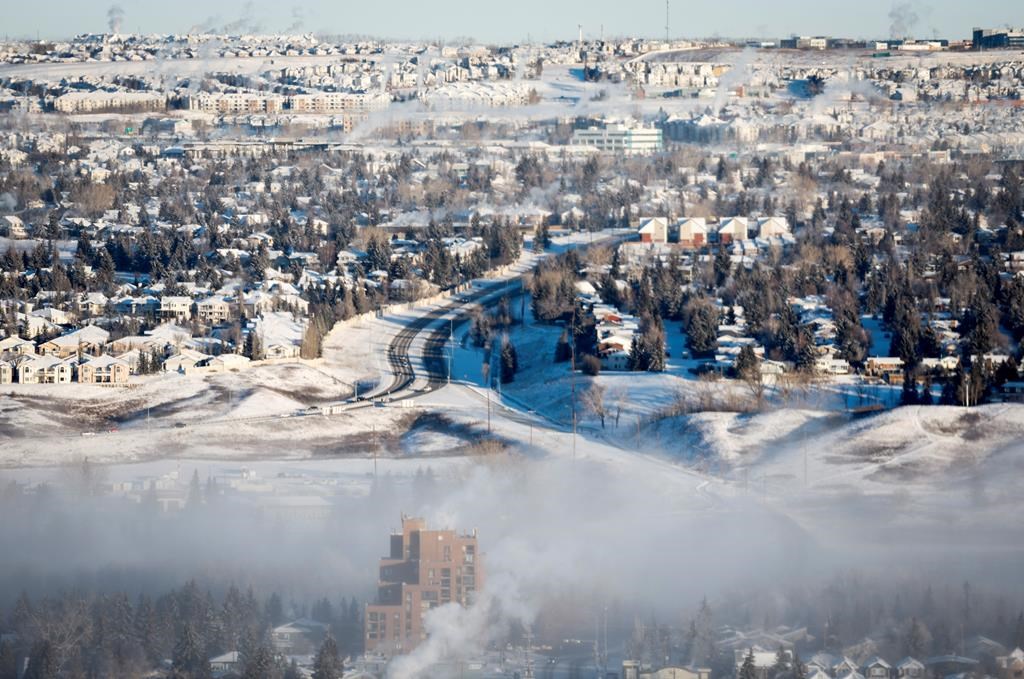Firefighters question Alberta cuts to aerial attack teams as province battles blazes

Posted May 9, 2023 6:35 am.
Last Updated May 9, 2023 6:44 am.
Former members of an elite Alberta wildfire-fighting crew say government budget cuts have left the province battling its current blazes short-handed.
“We could have been difference-makers,” said Jordan Erlandson, a former member of Alberta’s Rapattack team.
Those firefighters were trained to rappel from helicopters to get at wildfires while they still only covered a few hectares. When one storm sparked several fires, they could extinguish them before they merged. They also cleared landing spaces for other helicopters to bring in crews and gear.
That program once had 63 firefighters stationed around the province, including at Edson, Fox Creek and Lac La Biche — communities now threatened by one of the busiest early fire seasons in provincial history.
But that program was cut in 2019 by the United Conservatives.
“They told us the program had been eliminated,” said former member Adam Clyne. “They just said budget.”
The saving was $1.4 million. The province’s wildfire budget for 2019 was about $117 million.
At the time, Devin Dreeshen, then minister of agriculture and forestry, said those firefighters spend only two per cent of the time rappelling from helicopters, and spend the rest of the time fighting wildfires on the ground. That figure is based on the number of times rappelling skills were used in the average of more than 1,400 fires in Alberta from 2014 to 2018.
Related stories:
-
Alberta government to provide emergency funds for evacuees of wildfires
-
Calgary opens wildfire evacuation centre at Stampede Grandstand
-
Alberta premier faces questions over premature disclosure of state of emergency
Dreeshen said at that time those figures suggest the rapattackers’ skills are better used from the ground.
However, documents obtained under Freedom of Information legislation and supplied to The Canadian Press suggest Dreeshen underplayed the importance of an aerial attack.
Those documents, from internal government communications, suggest that rappel crews were called out about 100 times annually between 2014 and 2018. They were forced to actually rappel into a fire about 23 times a year.
“This is an assessment of wildfires that rappel crews were deployed to that there were no other feasible means of getting to,” said one email from a government forester.
Government spokeswoman Leanne Niblock said Alberta has other ways to get at remote fires, including exiting a hovering helicopter and walking in from the nearest road.
“We continue to do all we can to fight these fires, and keep Albertans and their property and homes safe,” she said in an email.
Alberta had initially planned to replace the Rapattack crews by dangling firefighters beneath flying helicopters and depositing them at the fire site. Transport Canada blocked that plan, saying it was too dangerous.
The Alberta documents acknowledge that beating through the bush to get to hot spots and clear landing pads would cost time.
“These activities can be performed by other trained crews by landing or driving to a nearby spot and driving in,” says a note from a government forester. “Clearly this will take additional time.”
Erlandson pointed out rappel crews sometimes jump many times into the same fire as part of a large campaign. He estimates teams jumped up 20 times per fire and probably closer to 100 times on the fire that levelled parts of Fort McMurray in 2016.
As well, rappelling in remains one of the fastest and safest ways to get into thick bush, muskeg and dense forest. It also allows firefighters to get right to work instead of slogging overland with heavy equipment.
“That way, we don’t have firefighters that are bagged by the time they reach the fire line,” said Clyne.
But it wasn’t all about the jumping.
“Rappel was just a tool,” Erlandson wrote in an email. “Other tools included bigger pumps, bigger helicopters, bigger buckets on the helicopter, bigger crews, more hose, more saws, and more experience.”
Meanwhile, Alberta is struggling with a fire season that had about 100 active fires on Monday. About 29,000 people have been ordered to leave their homes in several communities, although an evacuation order was lifted late Sunday for Edson, a town of about 8,400 people west of Edmonton.
“We would have caught some of them when they were small,” said Erlandson.
The rapattackers could have helped, said Ryan Kalmanovitch, a contract firefighter currently battling blazes near Edson.
“They’re definitely missed,” he said.
Kalmanovitch said Monday that even on relatively quiet days, rapattackers could be helping set fire perimeters and dousing hot spots.
“They would be able to action those while they’re small and that would allow us not to divert resources,” he said. “They would absolutely be useful, maybe more so than other crews.”
Alberta is expected to experience bigger and more intense wildfires as climate change lengthens the fire season and dries out fuels in the forest. Sooner or later, Alberta was going to experience a spring like it’s now having.
“This is going to cost taxpayers in the long run,” said Clyne. “This spring is a prime example.”








